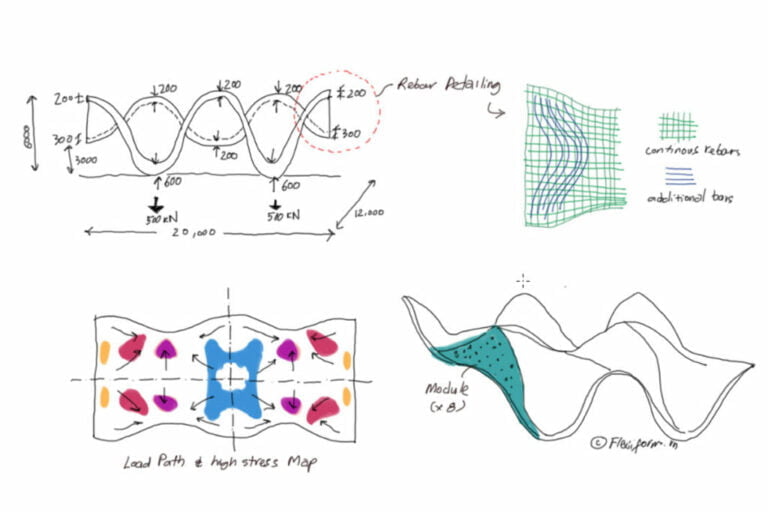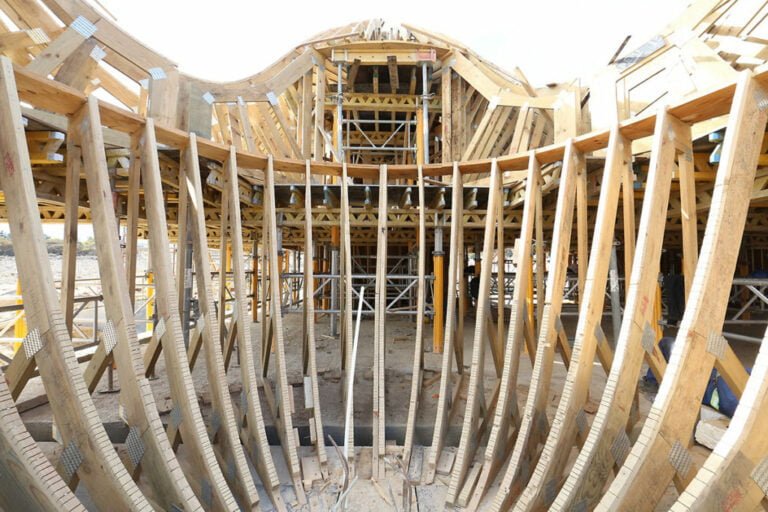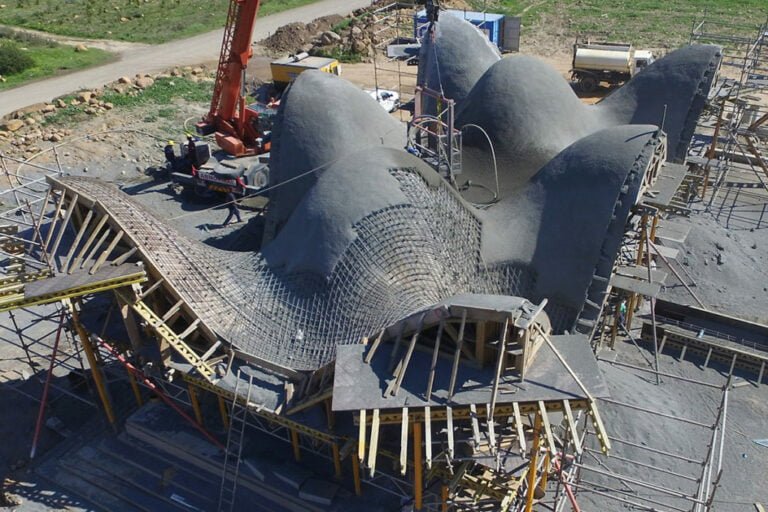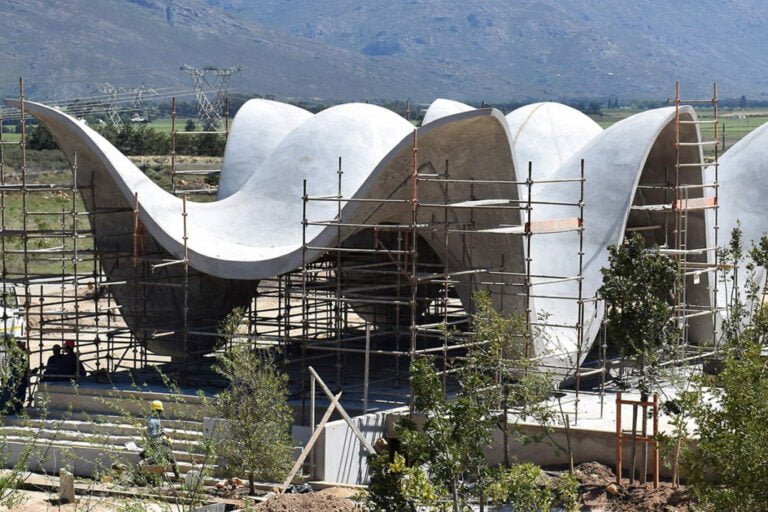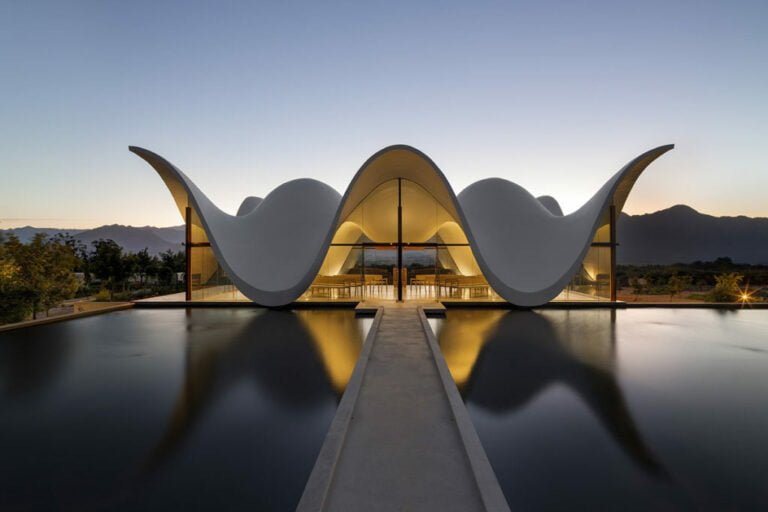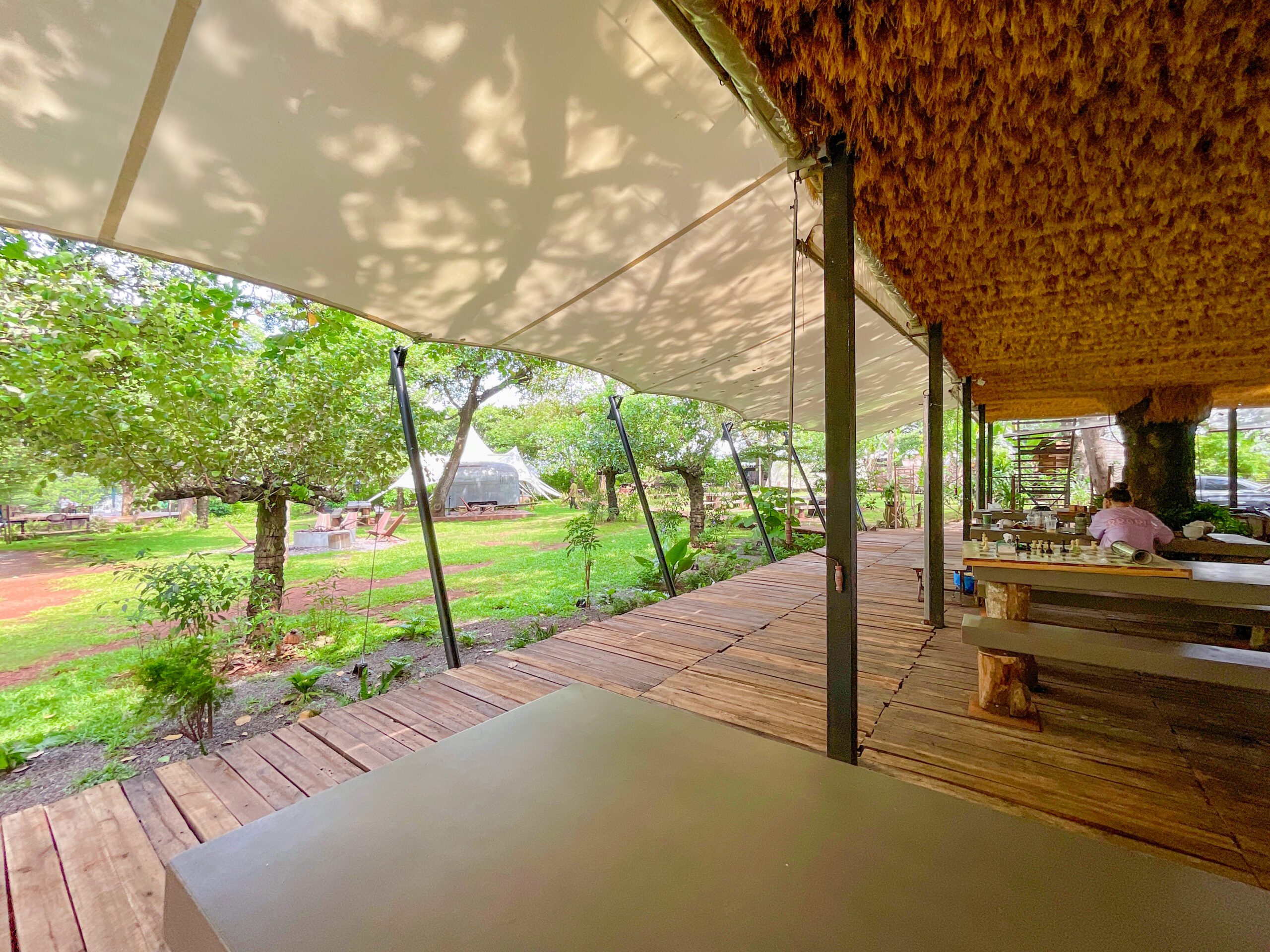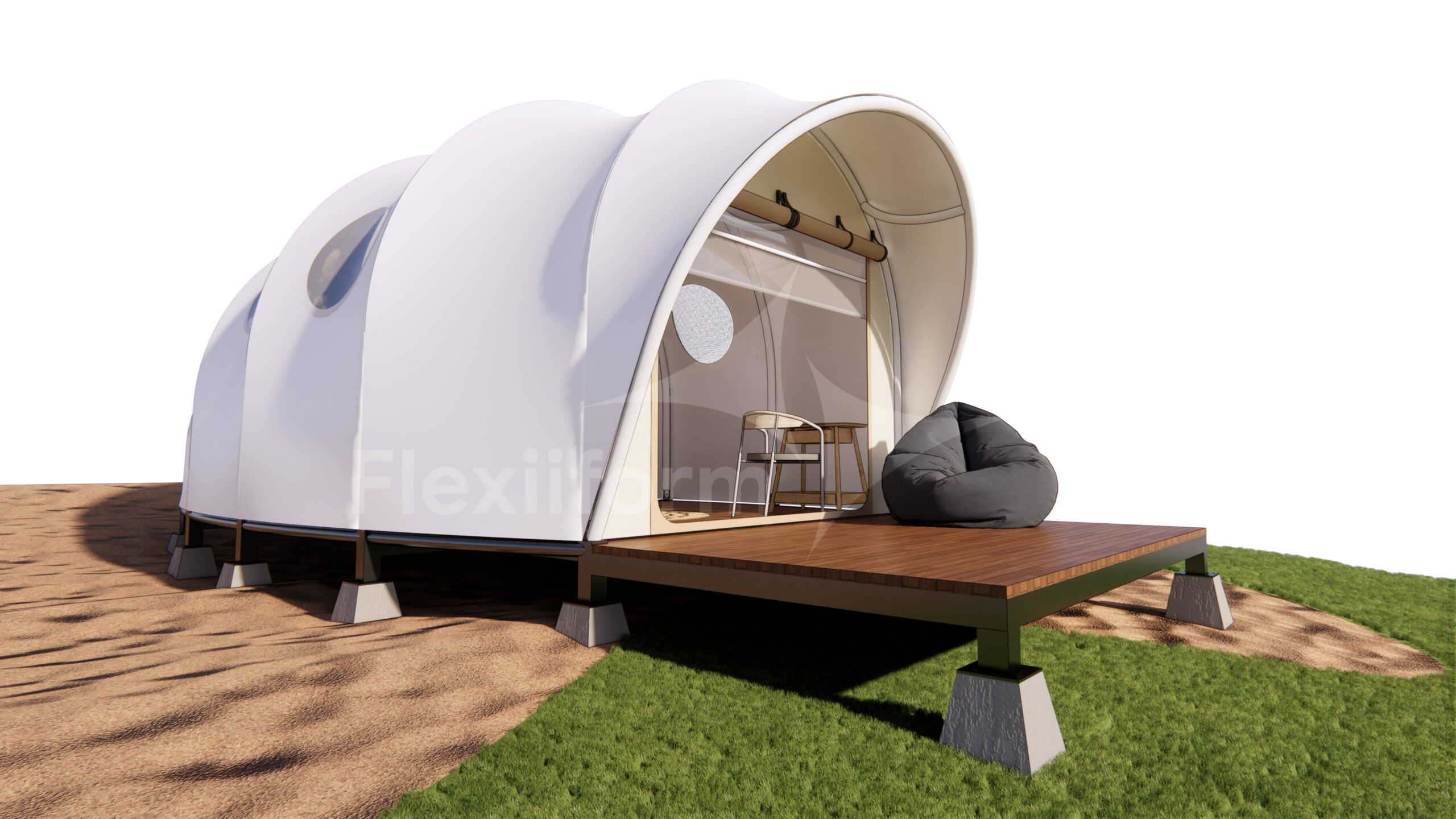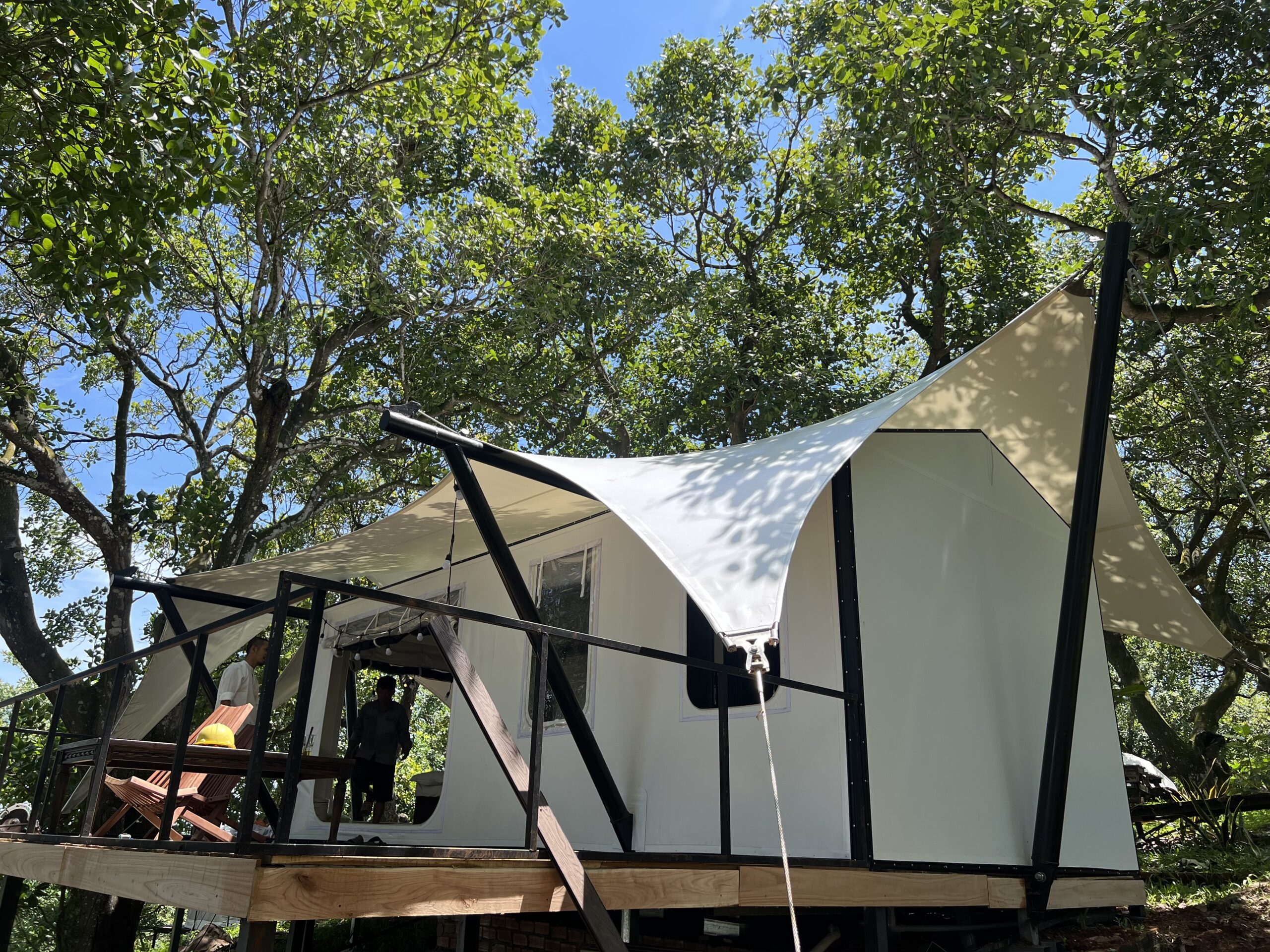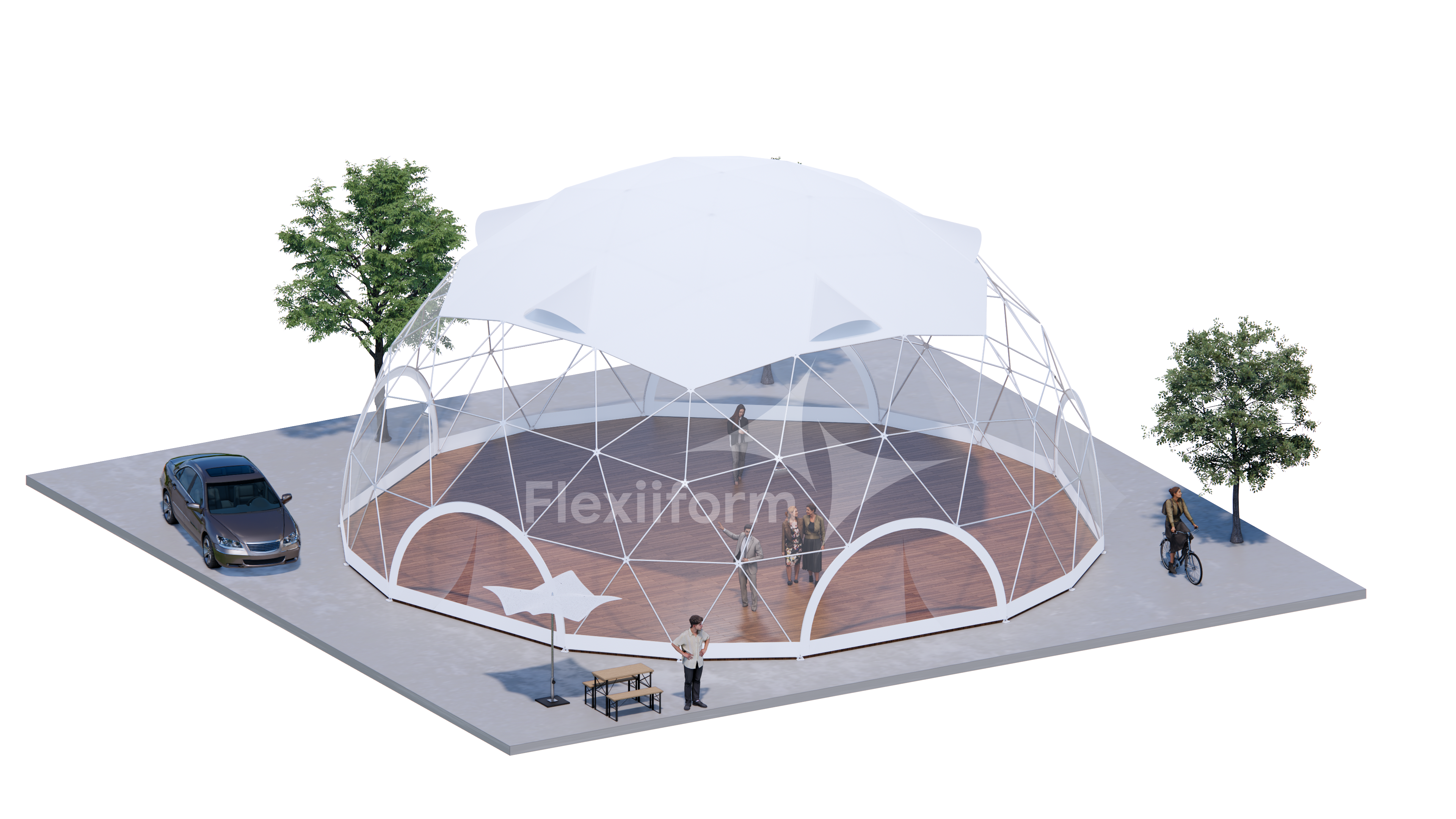Current Situation and Solution: Technical Analysis of Bosjes Chapel Architectural Canopy and Potential of Tension Fabric Materials
Bosjes Chapel, designed by architect Coetzee Steyn of Steyn Studio London-based Bosjes Chapel is a striking architectural landmark set in a vineyard setting in the Western Cape of South Africa. The Bosjes Chapel architectural canopy is characterised by its unique undulating form, which echoes the silhouettes of the surrounding mountains and historic Cape Dutch gables. Constructed from a thin cast concrete shell, the canopy forms six load-bearing peaks, suspended over a reflecting pond, creating a striking visual effect of lightness and harmony with nature.
—
Technical Requirements Analysis & Solution Context
Realizing the complex shape of the Bosjes Chapel architectural canopy using thin-skinned concrete posed a number of serious technical challenges. The project required a high level of precision in every detail to ensure structural integrity and achieve the desired aesthetic effect. Issues such as thermal movement of the structure, complex formwork requirements, manual rebar placement procedures and specific concrete pouring methods in adverse environmental conditions were major barriers. This context required meticulous calculations, advanced construction techniques and a high level of adaptability to turn the design concept into reality.
—
Technical Solutions
To solve the complex technical problems of the Bosjes Chapel architectural canopy, a series of specialized design and construction methods were applied, while opening up the potential for alternative material solutions.
Structural Design and Calculation
The structural part of the Bosjes Chapel architectural canopy was designed by Henry Fagan. To create a surface with the smallest cross-section and evenly distribute the forces, a complex structural model using the Finite Difference Method (FDM) was established. The connection details were hidden inside, and the drainage system to the floor was also carefully calculated, creating the impression of the building as a thin shell floating on the water surface. To ensure uniformity during construction, an installation module was deployed 8 times to create the roof system. The use of modern software such as Rhino Grasshopper from Parametric House (as described in the reference video) was very useful for balancing the architectural proportions and calculating the structure for the complex and curved roof forms.
The challenge of constructing thin concrete shells
The complex roof of the Bosjes Chapel is 20 metres long, 12 metres wide and 6 metres high at the top. The project team chose shotcrete as the construction material. Due to the complexity of the roof form, 3D CAD models were used to calculate the volume of material required. The shell consists of 74 cubic metres of concrete and 8,175 kg of high-strength steel reinforcement, supported by four hidden reinforced concrete bases, each supporting a vertical load of nearly 50 tonnes. The biggest challenge was cutting and bending each rebar (top and bottom) by hand to fit the unusual shape of the shell. The shotcrete pouring had to be done from mobile platforms and was frequently delayed by strong winds and rain, taking six weeks instead of the originally estimated two.
Potential of Tensile Fabric as an Alternative
In addition to thin-shell concrete, Tensile Fabric is also a great choice for complex architectural forms with high shaping requirements. With its light, flexible properties and ability to create soft curves, Tensile Fabric canopies can be shaped to resemble the shape of the Bosjes Chapel roof. A typical example is the design of world-famous female architect Zaha Hadid at the project The Serpentine Sackler Gallery in 2013, where a tensile fabric structure was used to create an organic, complex yet elegant and unique form.
—
Results and Performance Evaluation
The completion of the Bosjes Chapel architectural canopy is a remarkable achievement in engineering, demonstrating the ability to realize bold architectural ideas despite many challenges. The project not only achieves unique aesthetic beauty but also demonstrates the solidity of thin-shell structures. However, the difficulties and long construction time of thin-shell concrete also highlight the potential of tensile fabric materials. Tensile Fabric, with its advantages of light weight, flexible shaping ability, and optimized installation process, provides an effective solution for similarly complex structures. This opens up new directions for architects to realize innovative designs more efficiently.
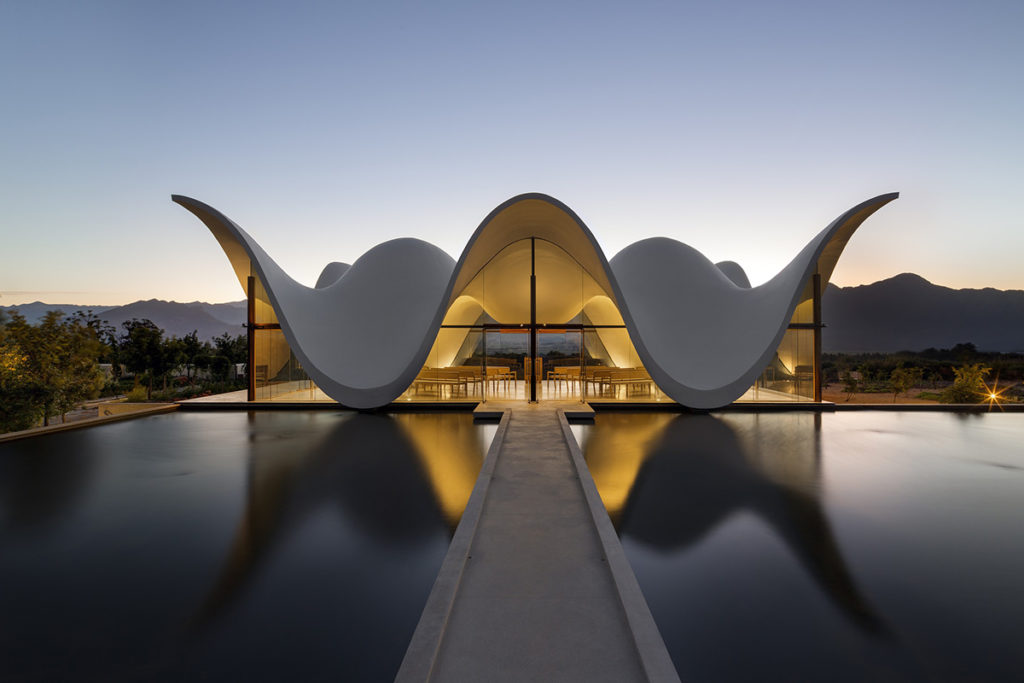
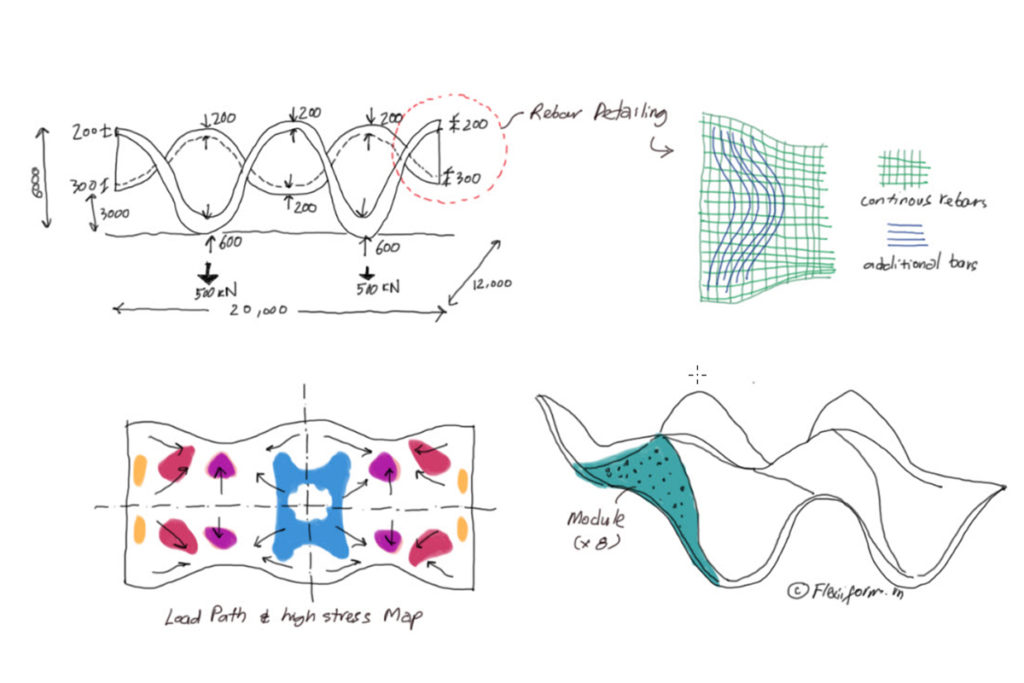
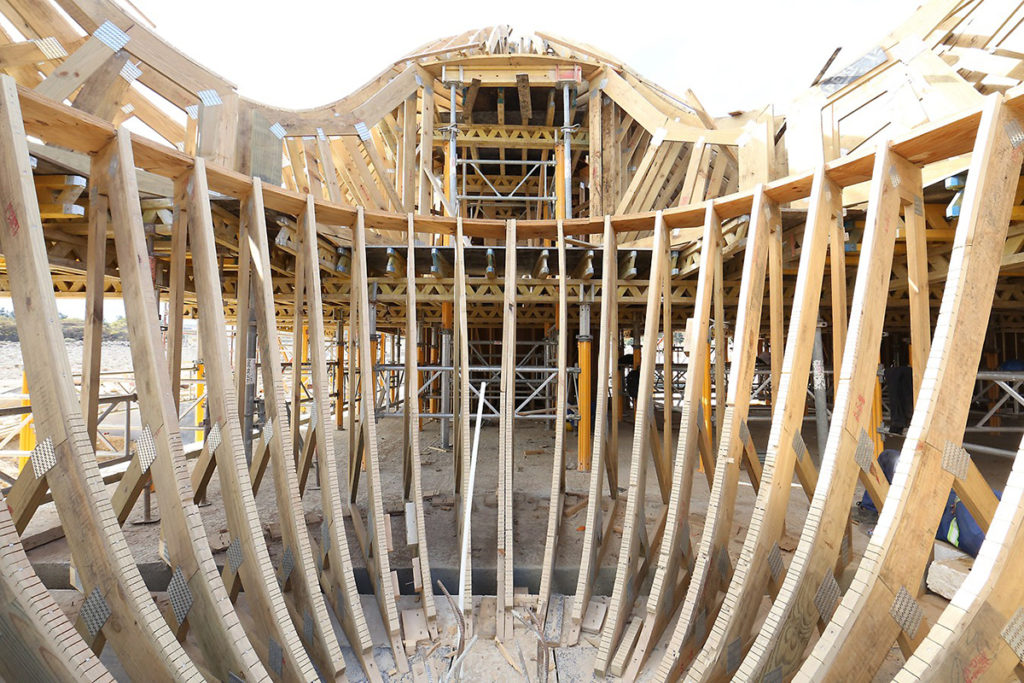

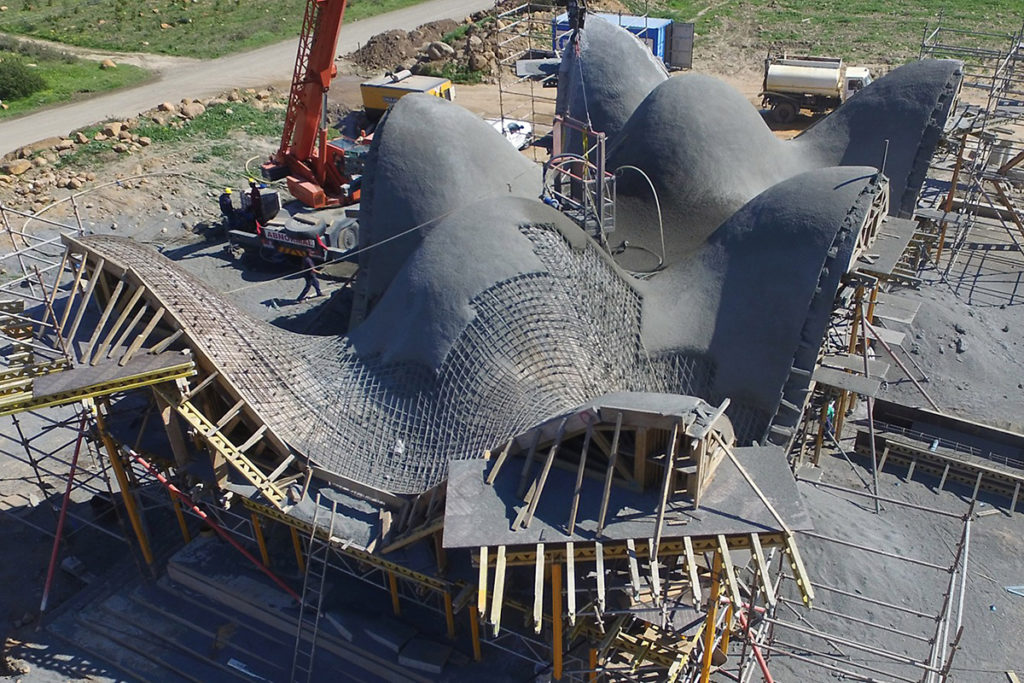
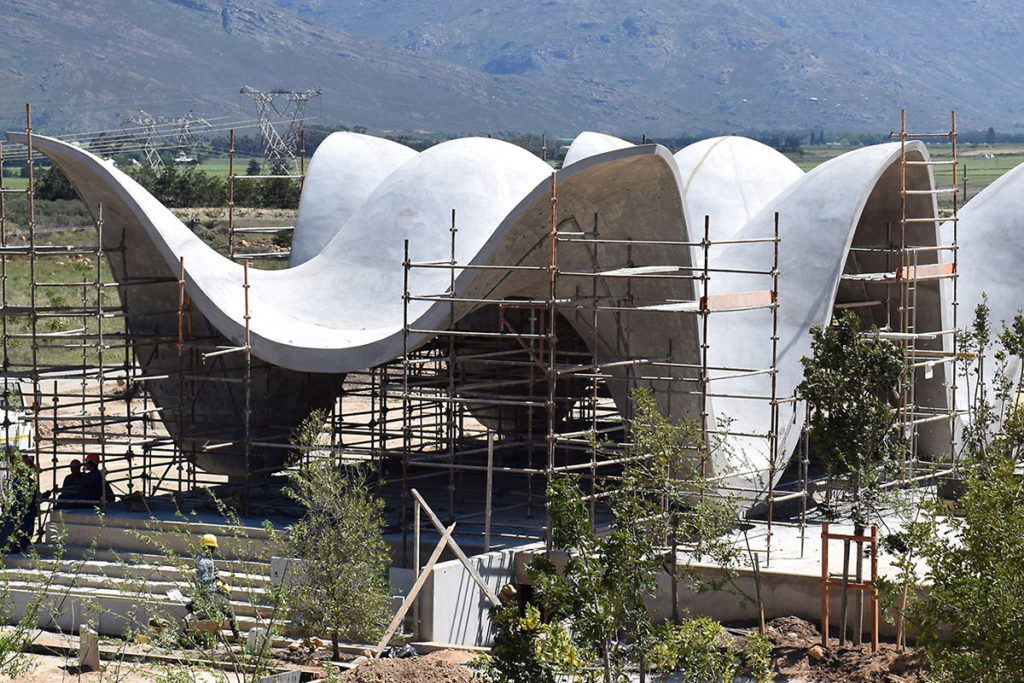
—
Contact Technical Consulting
Flexiiform is proud to be one of the leading units in Vietnam providing solutions for designing and constructing tensioned canvas. With its predecessor originating from the company FasTech, Flexiiform team gathers experts with over 10 years of experience in the industry, along with a team of consultants providing the right solution according to the requirements for a variety of models and projects at home and abroad. We can apply advanced 3D modeling methods (such as Rhino Grasshopper software) to create complex and highly demanding tensile fabric roof designs, similar to Bosjes Chapel, bringing stunning beauty and durability to your project.
For expert advice on stretcher solutions or to request a detailed quote, please contact us.
Contact information:
Company: Flexiiform
Phone: +84 8678 68830
Website: https://flexiiform.vn/
Fanpage: https://www.facebook.com/flexiiform/


